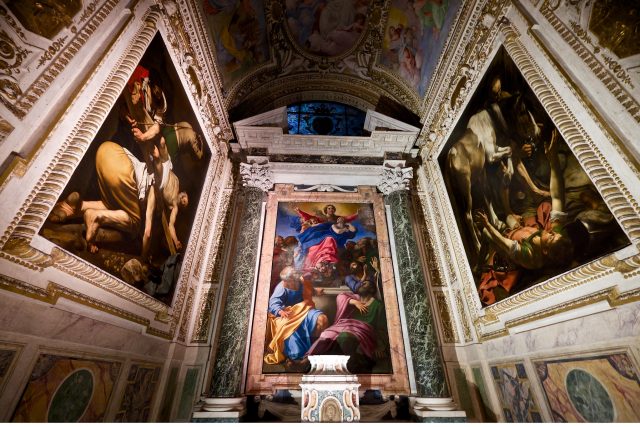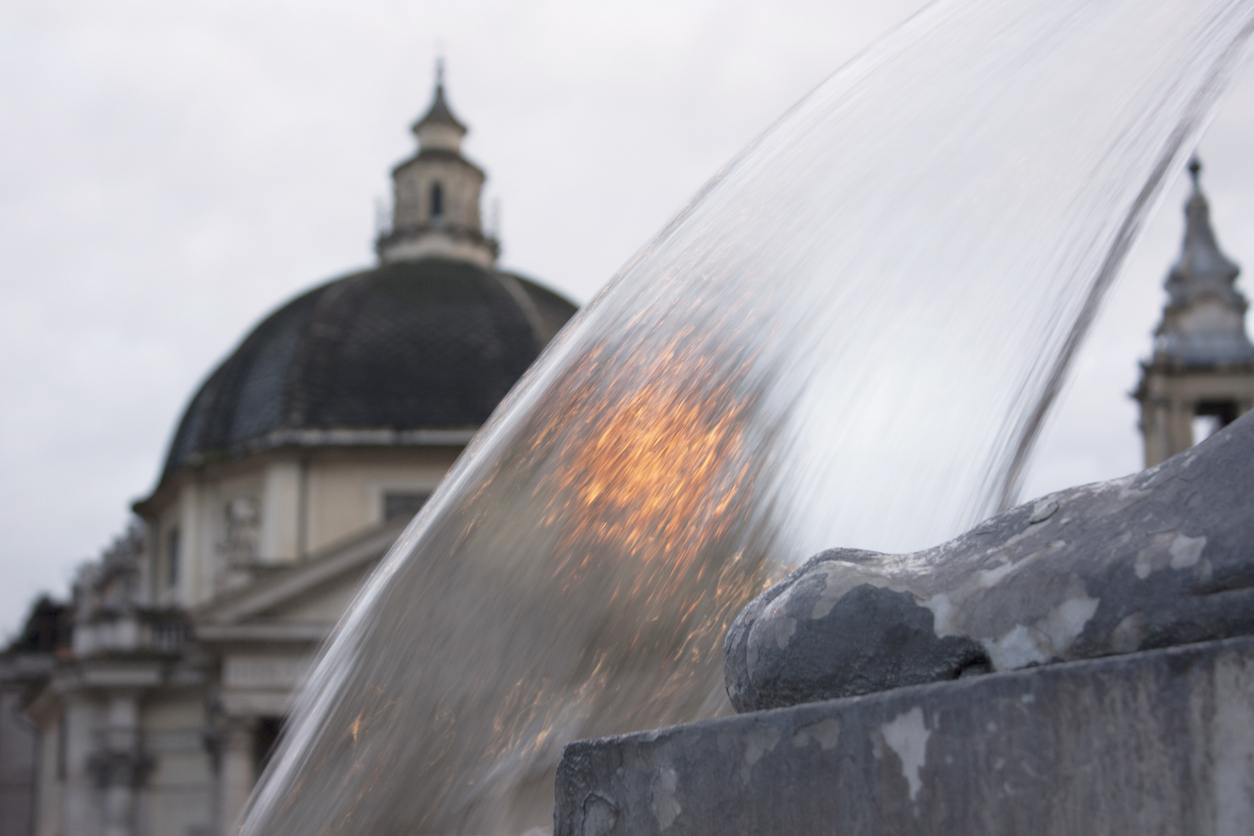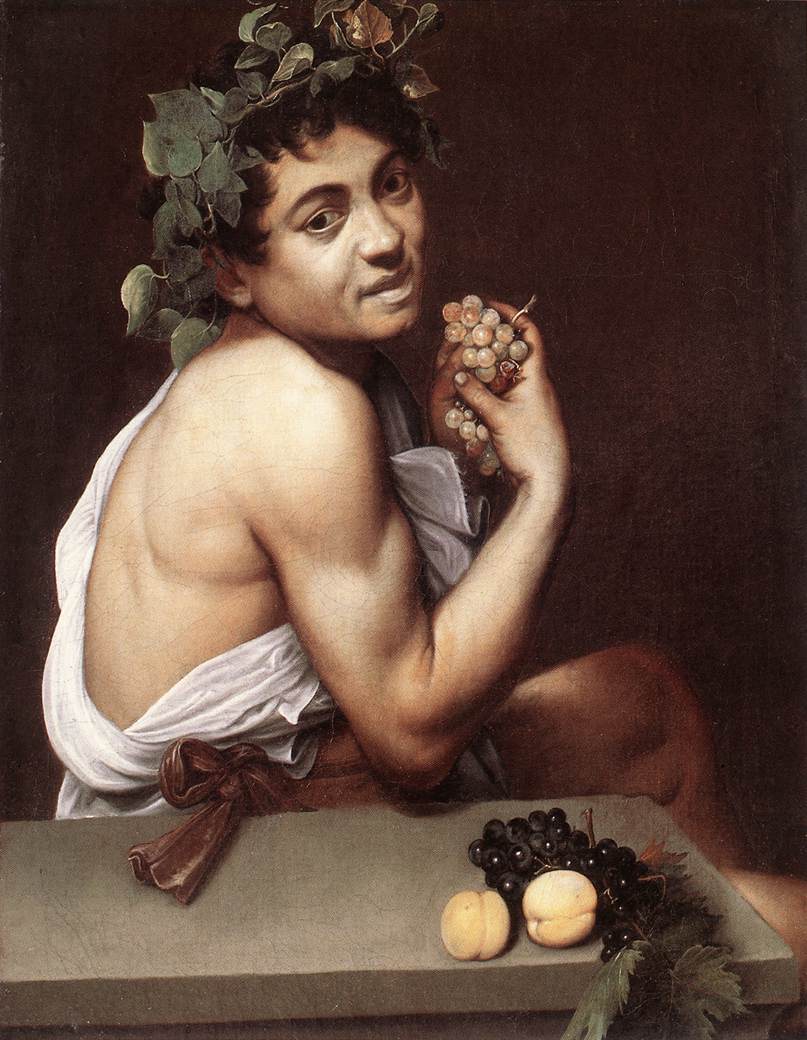 Roberto Taddeo
Roberto Taddeo
If my last trip to Rome had been a pizza, its top two ingredients would’ve consisted of a great lodging in lovely medieval Trastevere and my route through a number of lovely Baroque churches in search of the Old Masters Caravaggio and Rubens. If you’re an art lover, many of the Eternal City‘s many houses of worship are a bonanza. And one late-16th- and early 17th-century ruffian called Michelangelo Merisi – better known as the virtuoso realist painter Caravaggio, also noted back in his day for painting everyday life as well as saints and such – may have been quite the sinner but also did quite a few religious commissions for churches and elsewhere. So in addition to finding his work in several key museums, Caravaggio fans can ogle others for free in several Roman churches.
 The York Project
The York Project
For example, the Contarelli Chapel near the altar of the late-16th-century San Luigi dei Francesi, the national church of France in Rome, located very near the Piazza Navona, is home to a Caravaggio triptych about the calling, the inspiration, and the martyrdom (above) of St. Matthew the Apostle. Executed in 1599 and 1600, these dramatic works never fail to inspire, and they come labelled with helpful explanations on their subject matter (and while you’re in here, also get an eyeful of the marvelous ceiling paintings by French Roccoco master Charles-Joseph Natoire).
 ampueroleonardo
ampueroleonardo
A 15-minute stroll north of here, the much older (1477) Basilica of Santa Maria del Popolo (above) is even more of a trove of Renaissance virtuosity, including Bernini, Bramante, and Raphael. I’d found it closed on a previous trip, so it was a joy to come in and contemplate its imposing interior. And it’s here in the Cerasi Chapel that I found our boy’s Conversion on the Way to Damascus and Crucifixion of St. Peter (top, flanking The Assumption of the Virgin Mary by Bolognese painter Annibale Carraci). Sure, I’d seen them in pictures before, but standing before them in person for a long while, I found myself transfixed by their chiaroscuro, the expression on the faces, and the power of the stories being told.
 Galleria Borghese
Galleria Borghese
Beyond the churches, as a true fan I also didn’t miss the opportunity to visit the Galleria Borghese, the art collection of Cardinal Scipione Borghese housed in his onetime palazzo set amid delightful gardens which begin just a block away from Santa Maria del Popolo. In these opulent rooms, apart from an amazing array of dazzling paintings and sculptures by Bernini, Raphael, Rubens, Titian, and Veronese, I avidly drank in Caravaggio’s Boy with a Basket of Fruit, St. John the Baptist, St. Jerome Writing, and Young Sick Bacchus (above).
 Lafit86
Lafit86
By the way, two other places to see Caravaggio, by the way, are the art gallery of the Vatican Museums, where The Entombment of Christ (above, 1604) hangs, and the Capitoline Museums, with The Fortune Teller (1594) and St. John the Baptist (Youth with a Ram, 1602).
And of course, along the way I paid proper obeisance to several of Rome’s many other Baroque masters, above all the immortal Michelangelo Buonarroti, for example with a visit to his reknowned statue of Moses, part of the tomb of Pope Julius II in the Basilica of San Pietro in Vincoli, located in the Oppian Hill Park in the ancient Monti neighbourhood several blocks north of the Colisseum. For an art lover, this is truly paradise – and furthermore, much of it can be seen for free in its churches. Bellissimo!

